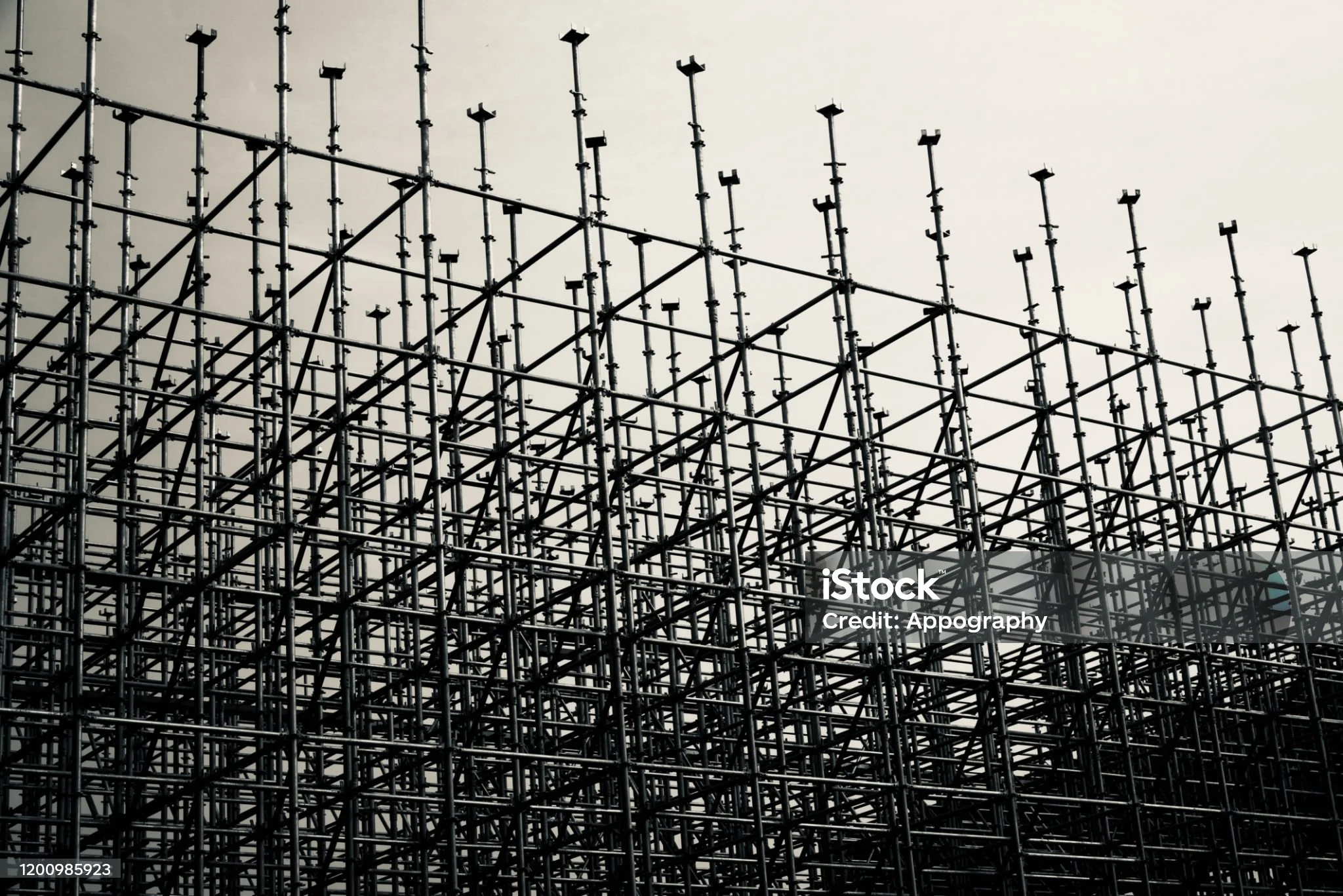In the dynamic world of construction, few components are as fundamental—and as often underestimated—as construction scaffolding. It forms the backbone of any structure’s external and internal support during build, renovation, or maintenance. Whether you’re constructing a skyscraper or restoring a historical monument, choosing the right scaffolding system is critical for safety, efficiency, and compliance.
In this detailed guide, we’ll walk you through the types, components, safety standards, and benefits of construction scaffolding, while also helping you make the right choice for your next project.
What is Construction Scaffolding?
Construction scaffolding is a temporary structure used to support workers, materials, and tools during construction, repair, or cleaning of buildings and other structures. It allows workers to access heights and hard-to-reach areas safely and efficiently.
Why Scaffolding is Essential in Construction ?
- ✅ Worker Safety – Provides a secure working platform at all heights.
- ✅ Structural Support – Maintains balance and load distribution during construction.
- ✅ Increased Efficiency – Enables multiple teams to work simultaneously at various elevations.
- ✅ Regulatory Compliance – Mandatory for most building projects under OSHA and global standards.
Types of Construction Scaffolding Systems
Choosing the right scaffolding type depends on the project scale, height, surface condition, and construction activity.
1. Cuplock Scaffolding
Quick-lock system with fixed nodes, ideal for heavy-duty loads and repetitive use.
Best For: Infrastructure, bridges, and industrial projects.
🔗 Explore Cuplock Scaffolding →
2. Frame Scaffolding
Lightweight and easy to assemble, commonly used in commercial and residential buildings.
Best For: Facade work and general-purpose construction.
🔗 See Frame Shoring Solutions →
3. Ringlock Scaffolding
Modern, modular, and versatile with a rosette joint system for flexibility.
Best For: Complex structures and multi-directional support.
4. Suspended Scaffolding
Hangs from the top of buildings, often used for cleaning or painting.
Best For: High-rise window cleaning and facade maintenance.
Key Components of a Construction Scaffold
| Component | Function |
|---|---|
| Standards (Vertical Tubes) | Vertical posts that transfer weight to the ground. |
| Ledgers (Horizontal Tubes) | Connect standards and provide support for planks. |
| Transoms | Cross-sectional tubes that support working platforms. |
| Base Jacks | Level the scaffold on uneven ground. |
| Couplers & Clamps | Connect and stabilize tubes at joints. |
| Planks/Decks | Standing platforms for workers. |
| Guardrails & Toe Boards | Safety barriers to prevent falls. |
🔗 Explore Accessories →
🔗 View Base Jacks →
Benefits of Using Certified Scaffolding Systems
- Safety First – Minimize accidents and injuries.
- Durability – Engineered for long-term use with hot-dip galvanized finishes.
- Time Efficiency – Rapid assembly and disassembly.
- Compliance – Meets OSHA, ISO, and international building standards.
- Adaptability – Suitable for both small-scale and large-scale projects.
Construction Scaffolding Safety Checklist
- Inspect all parts before assembly.
- Use safety harnesses and PPE for workers.
- Never exceed load capacity limits.
- Ensure scaffolding is level and secured with jacks.
- Install guardrails and toe boards at all elevated platforms.
- Train workers on scaffold usage and emergency response.
🛠️ Tip: Always source your scaffolding from a certified manufacturer like Eastman Exports Inc. for safety assurance.
Frequently Asked Questions (FAQs)
Q1. What type of scaffolding is best for construction sites?
Cuplock and ringlock are ideal for heavy-duty, industrial, and infrastructure projects due to their load-bearing capacity and ease of use.
Q2. How much weight can construction scaffolding hold?
Depending on the system, it can hold up to several tons. Always check the manufacturer’s load specifications.
Q3. How long can scaffolding be left in place?
Scaffolding can be used as long as needed—provided it passes regular safety inspections and remains in good condition.
Q4. Do I need a permit to erect scaffolding on a site?
Yes. In most jurisdictions, you’ll need local authority approval and adherence to OSHA or equivalent standards.
Conclusion: Build Strong, Build Safe
Construction scaffolding is not just a temporary frame—it’s a safety system. Choosing the right scaffolding type, ensuring proper installation, and sourcing from reliable manufacturers like Eastman Exports Inc. ensures a solid foundation for your success—literally and figuratively.
For top-quality, globally compliant scaffolding systems, get in touch with us today.
👉 Request a quote or consultation now


